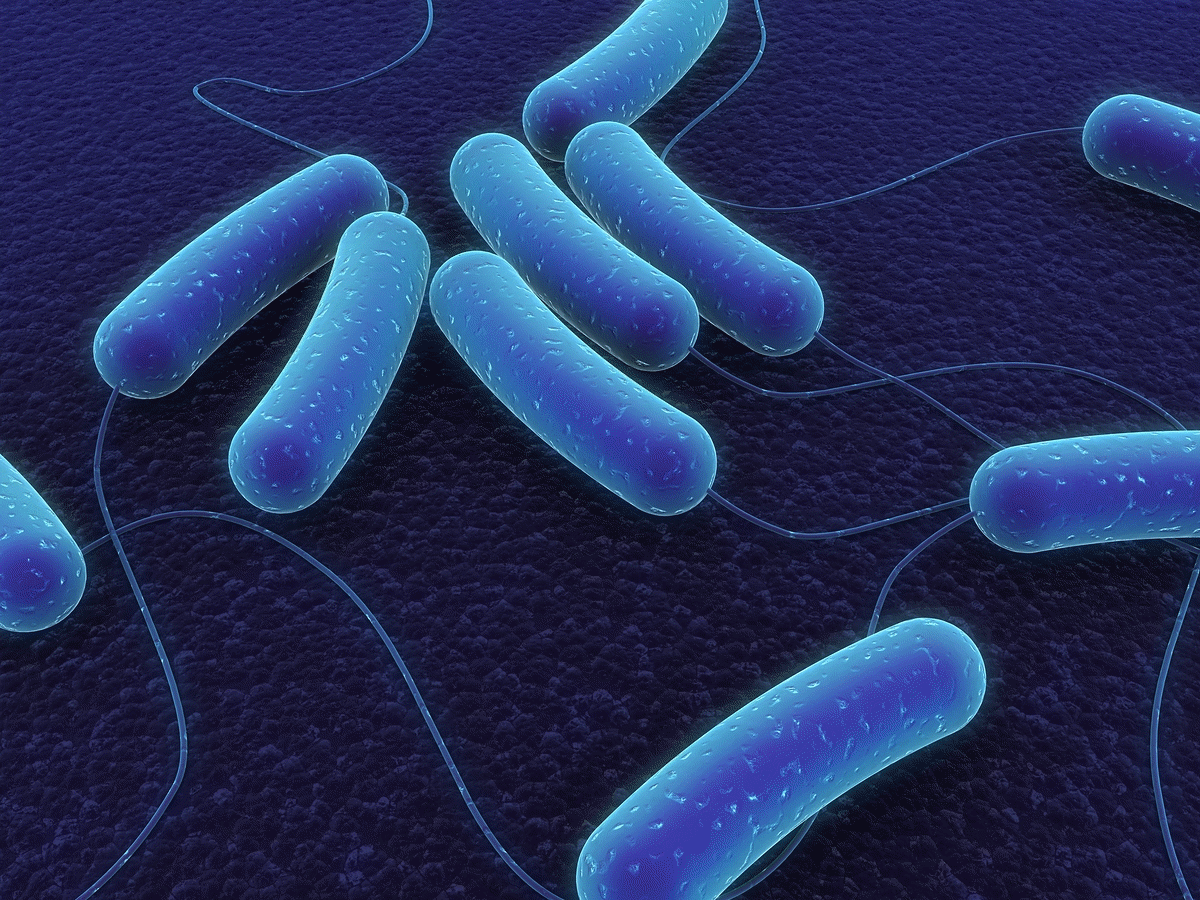 Cells without nuclei are called prokaryotes.
Bacteria constitute a large domain of prokaryotic microorganisms.
Typically a few micrometers in length, bacteria have a wide range of shapes, ranging from spheres to rods and spirals.
Cells without nuclei are called prokaryotes.
Bacteria constitute a large domain of prokaryotic microorganisms.
Typically a few micrometers in length, bacteria have a wide range of shapes, ranging from spheres to rods and spirals.
Prokaryotes are a group of organisms whose cells lack a membrane–bound nucleus (karyon).
The organisms whose cells do have a nucleus are called eukaryotes. Prokaryotes do not have a nucleus, mitochondria, or any other membrane–bound organelles. In other words, all their intracellular water–soluble components (proteins, DNA and metabolites) are located together in the same area enclosed by cell membrane, rather than separated in different cellular compartments.
Prokaryotes can be distinguished from eukaryotes in terms of their size, cell structure, and molecular make–up. Most prokaryotes lack extensive, complex, internal membrane systems. Although some cell structures are observed in both eukaryotic and prokaryotic cells, some structures are unique to prokaryotes. Prokaryotes can be divided into two major groups: Bacteria and Archaea. Although similar in overall structure, Bacteria and Archaea exhibit important differences in their cell walls and membranes. Archaea were originally thought to live only in inhospitable conditions such as extremes of temperature, pH, and radiation and mostly considered as extremophiles.
Most bacteria can be divided into two broad groups based on cell wall structure; the differences in cell wall structure correlate with the reaction to the Gram staining procedure. Many prokaryotes are motile; several mechanisms for motility have been identified. Some bacteria form resistant endospores to survive harsh environmental conditions in a dormant state.